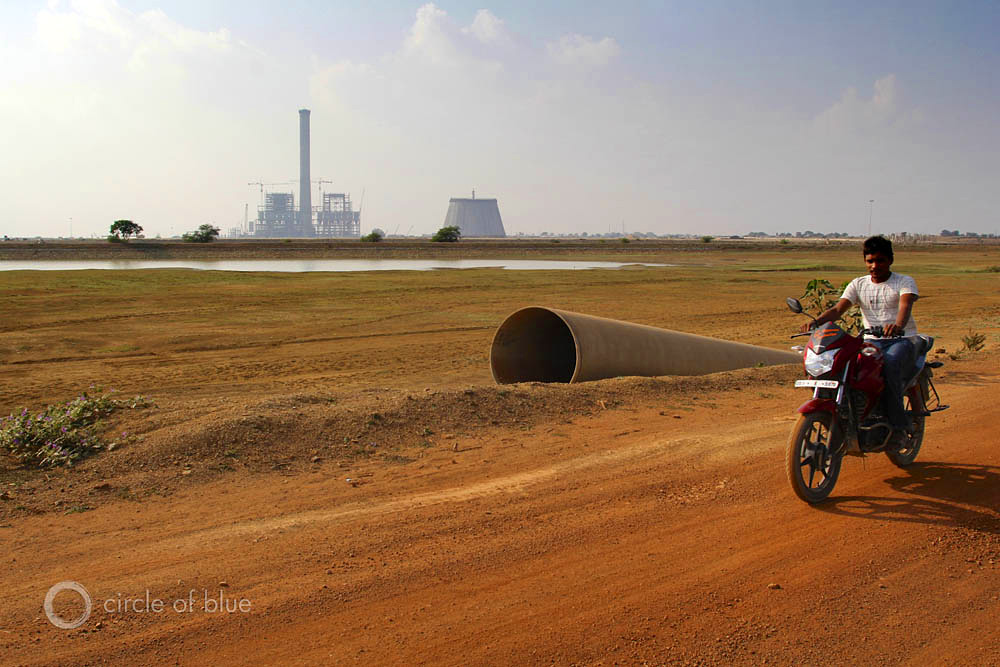Booming Infrastructure Poisons Bangalore’s Lakes, Depletes Groundwater
Bangalore’s largest lake is so contaminated that it routinely catches fire. Officials are unsure how to contain the city’s pollution.

Rubbish at Rampura Lake. (Photo by Mike Prince/Flickr)
The Rundown
Three years ago, Bellandur Lake caught fire for the first time. Bellandur is the largest lake in Bangalore, India, and nearly half of the city’s sewage flows into the lake each day. The waterbody is so polluted that a layer of froth covers the 900-acre lake. It routinely catches fire.
Bangalore, the IT hub of India, has undergone explosive growth in recent decades. An infrastructure boom eliminated many waterways and choked the rest with a mix of domestic and industrial waste. An analysis of 305 lakes in and around the city found that not a single one is suitable for drinking or bathing. Population growth also depleted the city’s groundwater.
“We need to acknowledge the erratic weather that we have now and that the rains are moving away towards the north.” –Kshitji Urs, an activist from the People’s Campaign for Right to Water, in reference to India’s shifting weather patterns. Many worry that dwindling rainfall could send Bangalore into water crisis.
By The Numbers
20 million Estimated population of Bangalore by the year 2031. The city’s current population is around 11 million.
26 percent Proportion of lakes that were in and around Bangalore 40 years ago that still survive today. Most of the lakes were overtaken by infrastructure.
100 percent Proportion of lakes in Bangalore that cannot be used for drinking water or bathing. Eighty-five percent of lakes are so polluted that they can only be used for irrigation and industrial cooling. Thirteen percent are suitable for wildlife and 2 percent can be used as potable water after proper disinfection.
30 hours Length of time that Bellandur Lake burned after it caught fire on January 19, 2018. Forty percent of the city’s untreated sewage flows into the lake every day.
207 billion litres Amount of groundwater extracted each year in Bangalore, compared to an annual groundwater recharge rate of 81 billion litres per year.
49 percent Proportion of water being supplied to Bangalore that is “unaccounted for” due to leaks and theft.
On The Radar
Bangalore’s reliance on water from the Cauvery River and monsoon rains is sufficient for now. The Bangalore Water Supply and Sewerage Board (BWSSB) has promised consumers that there will be no water shortages this summer, citing better-than-average monsoon rains. In a recent ruling, the Indian Supreme Court also allocated a larger portion of the Cauvery River to help meet Bangalore’s drinking water needs.
Still, officials acknowledge that improving and diversifying Bangalore’s water sources is crucial for future sustainability. Earlier this month, the BWSSB revived its Unaccounted for Water (UFW) initiative, hoping to limit the amount of “lost” water. The city is also working to harvest rainwater more effectively. And, of course, Bangalore is trying to rejuvenate its lakes. The way forward is complicated, though, especially as the city continues to grow. The BWSSB estimates that it would take 25,000 crore (nearly $4 billion) to restore Bangalore’s tainted lakes.
Resources And Further Reading
BWSSB revives project to check unaccounted for water (The Hindu)
Dear BBC, Bengaluru isn’t running out of water soon. Here’s why! (Citizen Matters Bengaluru)
Is Bengaluru about to run dry? (The Indian Express)
No water shortage this summer, says BWSSB (The Hindu)
Not a single lake tested in Bangalore can be used for drinking water or bathing (The Hindu)
SC decision will help Bengaluru, but a lot more needs to be done (The New Indian Express)
Why This Lake Keeps Catching on Fire (National Geographic)
Kayla Ritter is a recent graduate of Michigan State University, where she studied International Relations and Teaching English to Speakers of Other Languages. She is currently based in Manton, Michigan. Kayla enjoys running, writing, and traveling. Contact Kayla Ritter











